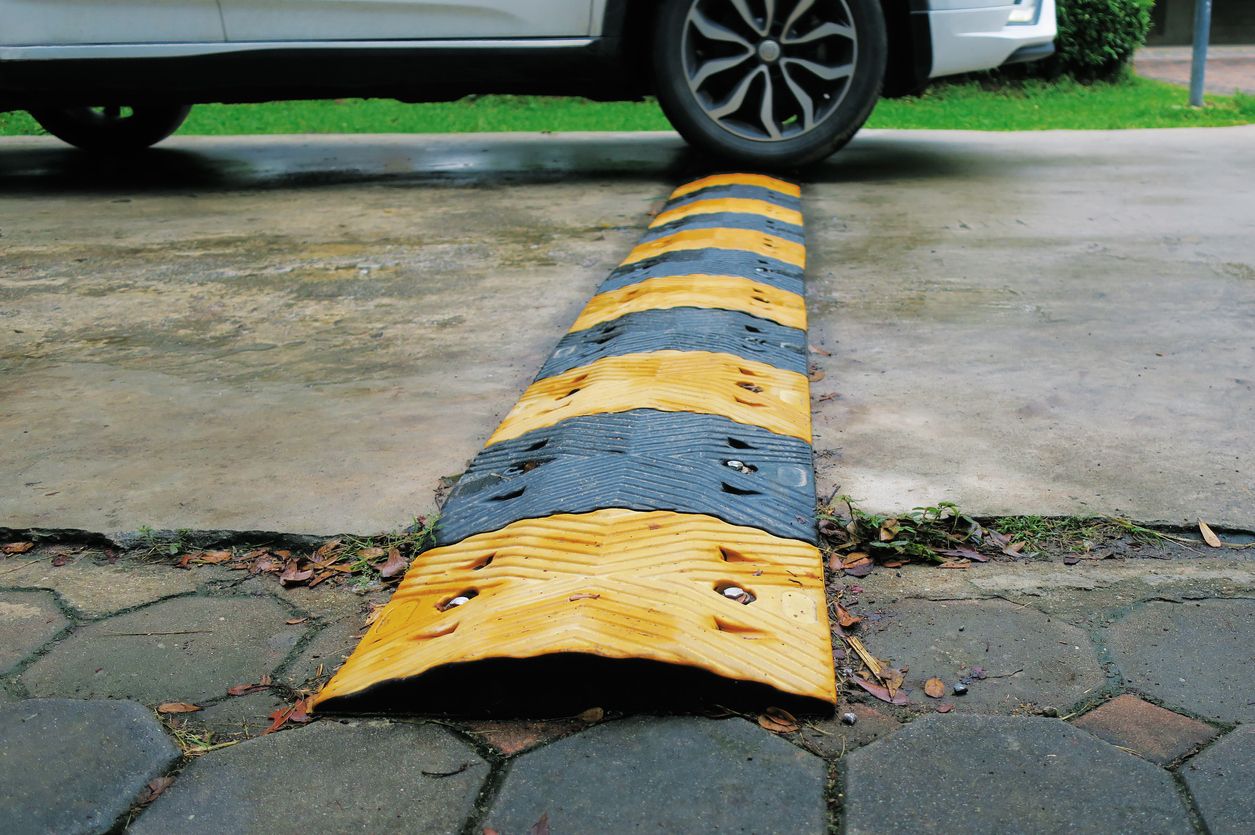With winter coming to a close, the good news is that we can stop worrying about poor cold-weather gas mileage. The not-so-great news is that pothole season is right around the corner, which means it's time to become more vigilant about the health of your suspension and steering system.
If you’ve ever hit a pothole so hard that you checked your rearview mirror for broken parts, you know how brutal they can be. But just because you don’t see your bumper lying in the road behind you doesn’t mean you’re in the clear. While your car’s body may look fine, the real trouble often occurs in your suspension and alignment. These issues might not be immediately noticeable, but they can lead to poor handling, accelerated tire wear, and costly repairs over time.
Fortunately, understanding how your suspension and alignment work together can help you catch problems early and keep your ride smooth and safe. Read on to learn how these systems function, what can go wrong, and the warning signs to watch for.
What Is the Suspension System In a Car?
Your vehicle’s suspension system is the interface between its body and tires. It absorbs bumps and shocks from the road while keeping your tires constantly in contact with the pavement, playing a crucial role in handling, comfort, and overall stability. The steering system works hand-in-hand with some of the suspension systems, and together, they control the alignment.
A well-functioning suspension system ensures your vehicle rides smoothly, while a damaged one can lead to a rough, unpredictable driving experience. Modern suspension and steering systems typically include the following components:
- Shocks or Struts: Designed to dampen impacts, struts and shocks prevent excessive bouncing, and help maintain consistent tire contact with the road. Shocks function as individual components, primarily absorbing road impact, whereas struts serve a dual role, acting as both a structural component of the chassis and a shock absorber. Your vehicle may have one or both of these components, depending on its suspension setup.
- Tie Rods: By connecting the steering system to the wheels, tie rods enable precise steering control and play a significant role in aligning the front wheels.
- Control Arms: Control arms are crucial links between your wheels, shocks/springs, and frame. Connecting these items helps maintain stability and enables your wheels to move up and down while driving. Vehicles typically have two control arms per wheel—an upper and a lower—unless they use struts, which often replace an upper control arm.
- Ball Joints: These pivot points connect your vehicle's control arms and steering knuckles, making them a critical front suspension component. Ball joints enable smooth wheel movement in multiple directions and support suspension articulation and steering control. Most cars have at least one lower ball joint per front wheel, though many also have an upper one.
- Sway Bars: Many modern vehicles have sway bars, also called anti-roll bars or stabilizer bars. By connecting your suspension's left and right sides, sway bars minimize body roll during turns, enhancing stability and handling.
What Causes Suspension Damage?
Suspension damage can result from everyday driving conditions or sudden impacts. Common causes include:
- Wear and Tear: Over time, suspension parts like shocks, struts, ball joints, and bushings within those parts degrade, introducing slop and negatively affecting performance.
- Potholes and Road Hazards: Hitting deep potholes or road debris can bend or break suspension components.
- Rust and Corrosion: Exposure to road salt and moisture can cause parts to seize or weaken metal components, leading to failure.
- Collisions: Even minor accidents can knock suspension parts out of place or cause unseen structural damage.
Note that the issues above may also affect your alignment.
What is an Alignment?
Alignment refers to the positioning and angling of your vehicle’s wheels in relation to its frame and the road. Proper alignment ensures even tire wear, responsive steering, and a smooth ride. When your suspension or steering is out of alignment, your car may pull to one side, steering may feel unusual, and tires may wear unevenly.
What Causes Alignment Problems?
Wheel alignment issues often accompany suspension problems, so the causes of suspension damage can also result in alignment issues. However, suspension damage itself can also cause misalignment, as worn-out or loose suspension parts can shift wheels out of their optimal positions, leading to tire wear and poor handling.
What Suspension Parts Affect Alignment?
While all suspension and steering components can contribute to the overall rideability of your vehicle, several play a direct role in maintaining proper alignment:
- Tie Rods: Vehicles typically have two tie rods — one inner and one outer tie rod end per tie rod with an adjustable sleeve between the two ends. This adjustable sleeve helps change their overall length. These tie rods connect the steering rack or gear to the steering knuckle, enabling you to turn your vehicle. Tie rod alignment is crucial, as their length determines your front wheels’ “toe” — how far in or out your wheels are angled.
- Ball Joints: Ball joints keep your suspension components tied together, so worn ball joints can result in sloppy steering, excess vibration, and misalignment.
- Shock Absorbers and Struts: Bad struts can cause steering issues and promote premature wear on suspension components. Additionally, if you recently replaced your struts, your vehicle ride height can change since it’s sitting on fresh springs. This change in height can throw previously correct angles out of alignment.
- And Pretty Much Everything Else: Practically every suspension component plays a role in vehicle alignment — even the rubber bushings between parts. While some parts may not be adjustable or meant to determine alignment, wear in any suspension component can cause your vehicle to sit, ride, and handle differently.
Symptoms of a Bad Wheel Alignment
A misaligned vehicle typically exhibits noticeable warning signs. Be on the lookout for:
- Pulling to One Side: Your alignment could be off if your car drifts left or right without steering input.
- Uneven Tire Wear: Misalignment causes certain parts of your tires to wear down faster.
- Off-Center Steering Wheel: If your steering wheel isn’t straight when driving on a level road, your wheels are likely out of alignment.
- Vibrations While Driving: A shaking steering wheel or excessive vibration in your car’s body can indicate misaligned wheels or suspension issues.
Preventing and Repairing Suspension and Wheel Alignment Issues
Besides unexpected factors like massive potholes or fender benders, suspension damage and wheel misalignment are highly preventable. How? Regular maintenance. After all, an ounce of prevention is worth a pound of cure. Unless otherwise specified by your vehicle manufacturer, we recommend coming in for a wheel alignment check every 6,000 miles or 6 months — whichever comes first.
At Firestone Complete Auto Care, we specialize in steering, suspension, and alignment maintenance to keep your vehicle riding smoothly and safely. But even if you’re already experiencing issues, our professional technicians can inspect, diagnose, and repair suspension components like shocks, struts, and ball joints to keep your car safe and responsive.
Schedule an appointment and visit your nearest Firestone Complete Auto Care for a professional inspection and service today!



